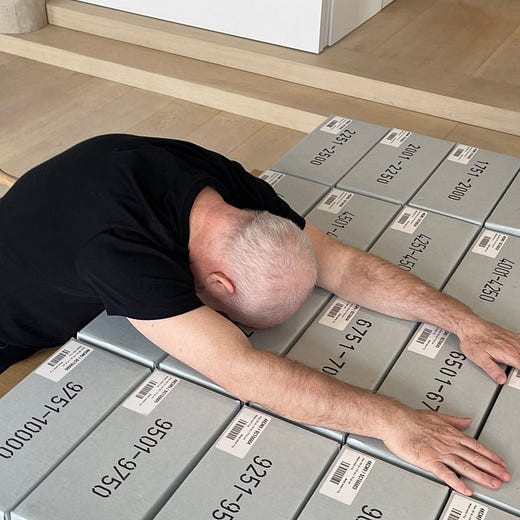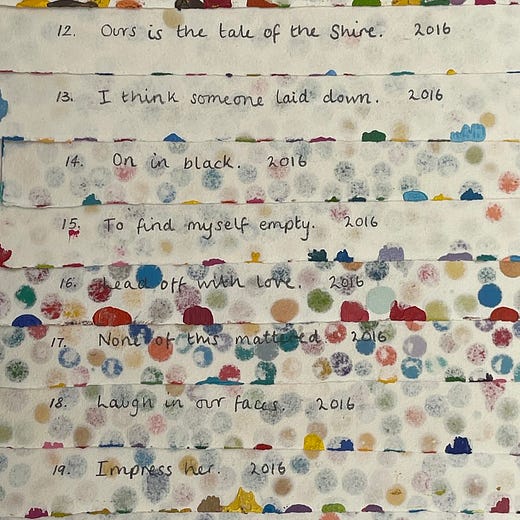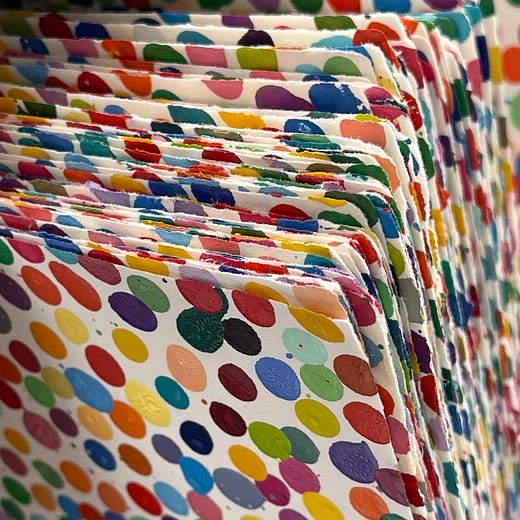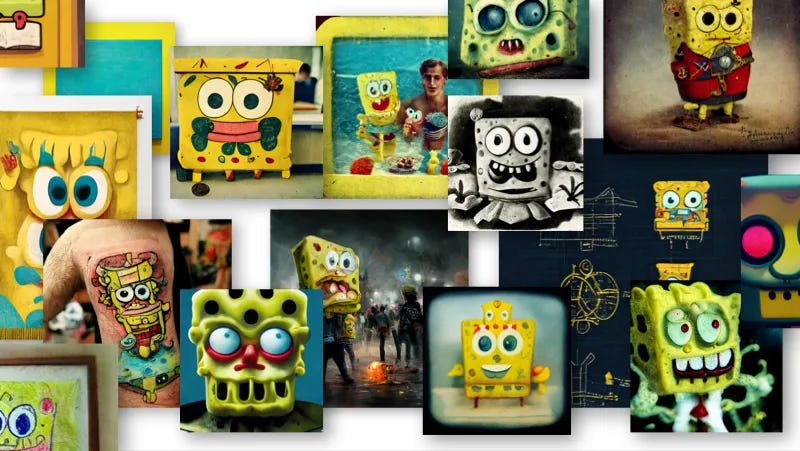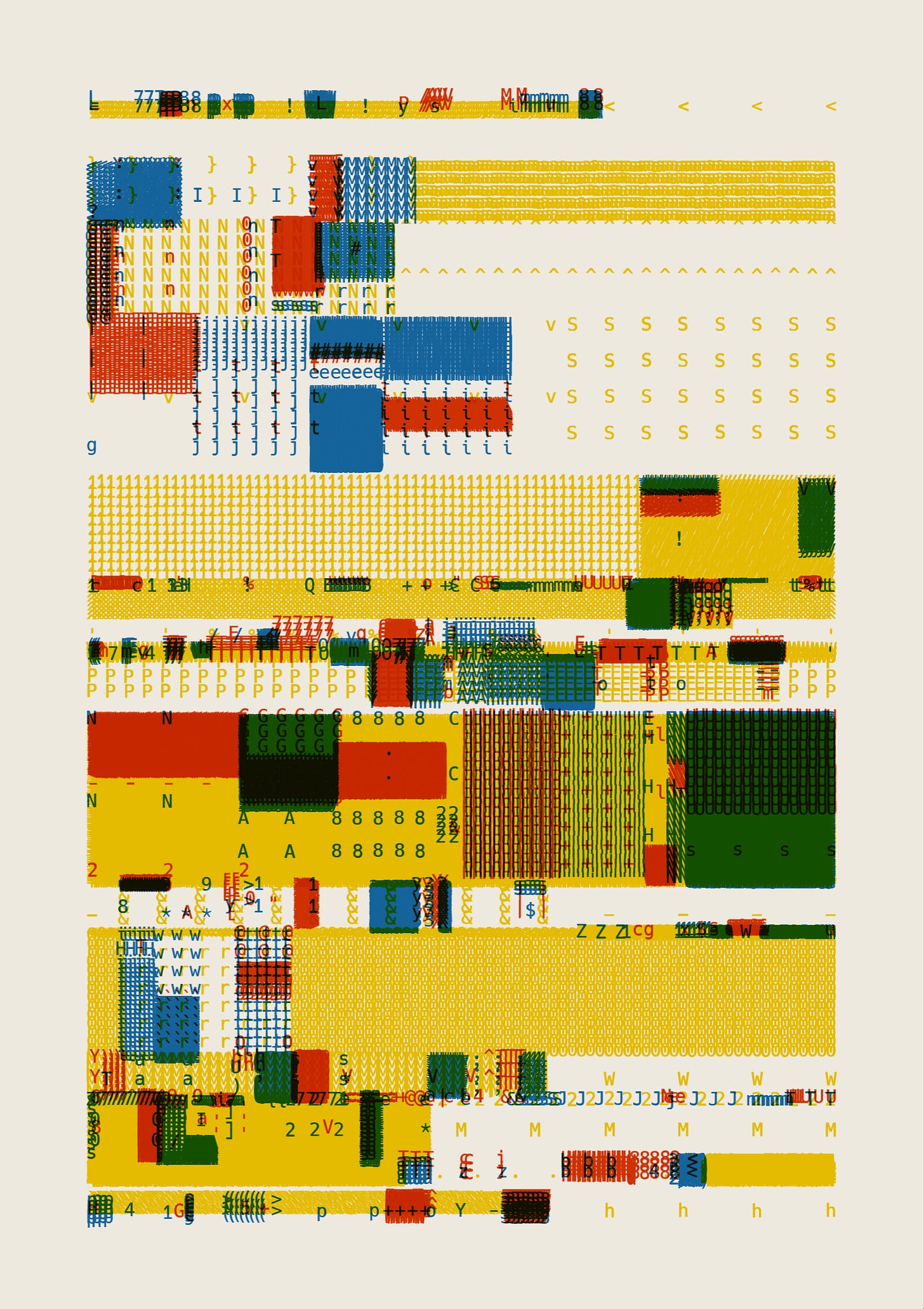Burning spotty money, wasting it on booze, and other degen delights (Issue #32)
It's your money, honey, we won't tell you how to spend it.
Some say that when mainstream artists start copying a new movement, you know it’s time to move on to other things. But some people also think buying booze they’ll never imbibe is a good investment. Or that navigating NFT Land without a hardware wallet is perfectly acceptable. It takes all sorts, anon. And that’s what keeps things interesting.
If you’re new to The Metaversalist and arrived here via a link or an email someone shared with you, please consider subscribing:
Right, let’s get straight into it!
DYOR 🧐
This week, the window closed for buyers of Damien Hirst’s “The Currency” NFT project to choose to redeem their NFT for the corresponding physical work. Buyers, who spent $2,000 on each of the 10,000 available artworks, could choose either the NFT or the physical work, with the version they didn’t choose set to be burned (literally in the case of the paper version).
Once an enfant terrible of the British art world, Hirst is now just a ridiculously, ridiculously wealthy bald dude… and some critics (both from the art and web3 worlds) have scoffed at his first foray into the NFT world and dismissed it as little more than a PR stunt and cash grab by a man who’s already the U.K.’s richest artist and who’s net worth is estimated to be in excess of $380 million.
There are undoubtedly plenty of theatrics surrounding the project. First, it launched a year ago, which is a lifetime in NFT Land, and during that time NFTs and cryptocurrencies have not only managed to hit all-time highs… but plummeted back to earth. Then there’s the actual burning. Starting in September, Hirst will burn the unclaimed physical pieces daily in a gallery space where spectators can come and watch.
But what’s far more interesting is how the project has played out in the market. Hirst originally said he expected most collectors would redeem the NFT for the physical piece… but only slightly more than half of the physical pieces were claimed (5,149) despite what’s happened in the NFT market this year.
For those who chose to hang onto the NFTs, it’s proven a sensible decision. Today the floor price for The Currency is 5,69 ETH (~$9,800). That’s a sizeable premium over the original $2,000 price of admission, and some pieces with unusual titles have fetched six figures (each piece is titled, and the physical edition includes a watermark, microdots, a hologram, and other anti-counterfeiting measures found on traditional banknotes).
Hirst called the project an “experiment in belief,” because buyers would have to choose which iteration of the work to put their faith in. That it’s turned out believing in Ethereum and NFTs was the smart move — economically speaking — is a triumph for the NFT market. Especially given “The Currency” comes from one of the traditional art world’s most recognizable figures… and especially because Hirst has decided to keep all 1,000 of the pieces from the collection he holds as NFTs.
But as artist Sarah Meyohas argues in the column linked below, Hirst’s project doesn’t do much to advance NFTs beyond helping bring them to the attention of the conventional art crowd. There’s no real community around the project, no perks beyond the value of the works themselves, and none of the other rich and adjacent elements of NFTs that make them so much more than merely a means for trading digital art.
If anything, “The Currency” reinforces how much a part of the traditional art world Hirst is… and that true innovation in NFT art is likely to come from somewhere else entirely. When it does, we’ll be ready with open hearts (and Metamask wallets).
Further reading:
🫶 Preach! 🙌
Probably nothing 🤔
VeeFriends x a16z 💰
In a blog post, NFT project VeeFriends announced it has closed a seed round from a16z crypto, the blockchain-and-related-technologies-focused arm of VC firm Andreessen Horowitz. VeeFriends is the brainchild of entrepreneur Gary Vaynerchuk, and so successful it drew 7,000 people to Minneapolis in May for a multi-day conference called VeeCon.
The size of the round hasn’t been disclosed, but VeeFriends says the cash injection will be used to “support building the future intellectual property of the 283 VeeFriends characters,” to “fuel expansion plans for its creative, technical and experiential operations,” and to “recruit the best talent from the entertainment and web3 industries.”
Veefriends collectible figurines and cards started arriving in buyers’ hands this week, too, which has resulted in plenty of breathlessly-narrated unboxing videos, or as we like to call it, “free publicity.”
Collectible cognac 🥃
Usher x Rémy Martin is a new collaboration from a company called BlockBar featuring 50 physical bottles of cognac paired with 50 NFTs and each priced at $500 (though only 25 were sold, with the other half reserved for the musician and his team). The label of each bottle is “AI-generated using a GAN network” with Usher’s description of the taste as a prompt.
Owners can burn the NFT to redeem their bottle (but won’t get it until October 2022). Or can continue to hold it and leave their bottle in RM’s capable… cellars. If this all sounds a little silly, congratulations, you’re a rational being operating in an increasingly peculiar world. The whole thing is ridiculous, but ours is not to judge, anon, it’s to keep you informed, and how you spend your money is your business.
Salt and pepper powerhouse 👑
Manager to the stars (and Bored Ape creators Yuga Labs), Guy Oseary continues to use his influence and enviable Rolodex to get stars to jump into the world of web3. He’s on the cover of Variety this month as its “Music Mogul of the Year,” but the far more spottable headline is “NFT King.”
As is to be expected, not everybody in the NFT Twittersphere agrees with this assessment, but the accompanying feature interview is nonetheless a fascinating read… and Oseary and the word “NFT” sharing a cover are surely a portend of further mainstream interest and adoption of tokens of the non-fungible, umm, variety.
Bag boosters 💰
The week that was (July 22 - 29, 2022) 🗓
Frens, this week’s chart is pretty ridiculous and suggests that degens are getting restless looking for the Next Big Thing… because it’s littered with questionable newcomers with names like “The Potatoz,” “YOLO Bunny,” and “Lady Ape Club.” Buckle up, because it looks like we’re in for a bumpy ride on the road back to normality.
🤔 Like real life... but worse 👖
To the moon 🌜
Hardware wallet-maker Ledger dropped its Market Pass, which comes with a limited edition black Ledger and will give holders access to future drops from notable artists on the Ledger Market.
Generative artists Zancan’s “Garden, Monoliths #156” sold for 75,000ꜩ (~$113,250), the second highest Tezos sale ever.
Despite facing more delays than Tesla’s Cybertruck, the Ethereum Foundation says the final stages of pretesting ahead of “The Merge” (the move from proof-of-work to proof-of-stake) will happen in late August. Which could mean a September rollout to users (though it won’t commit to that). Still… even it arrives in December, it’ll still beat the Cybertruck to market (though, granted, at this rate, the death of our sun might, too).
Infinite Objects, the maker of “video prints” will now offer owners of Snowfro’s “Chromie Squiggles” the chance to order an “authenticated NFT print” for $299. What does that mean? The rear of the print will feature QR code pointing to the respective Squiggle on ArtBlocks, surrounded by the text “authenticated NFT video print.”
MTV’s Video Music Awards (VMAs) now include a “Best Metaverse Performance” category. It’s more like “Best Performance in a Video Game,” but it’s a start.
Aku World hired Roger Dickerman as its “Head of Web3.” Dickerman is the founder of The Artiflex Project and the NFT Origins podcast.
In notable sales: XCOPY’s “God is Typing” sold at auction on SuperRare for 256.5 ETH (~$440,500) after an intense bidding war.
Bored Ape #4171 sold for 255 ETH (~$350,000).
Nick Tomaino from crypto investment firm 1confirmation spent 2,690 ETH (~$3.3 million) on CryptoPunk #4156 and shared a Twitter thread explaining his motives.
And, “Autoglyph #231” sold for 160 WETH (~$243,000).
🪡 Thread of the week 🧵
Bedtime reading 📚
Coinbase released its Q2 investment memo, which includes a lengthy section on Solana and why we should all be paying attention to it.
On a lighter note, this story from Parker Malloy on using Midjourney’s AI art tool to create 1,000 SpongeBobs as a distraction from the horrors of the world is at times dark, at others delightful.
Goats only 🐐
Whether you’re team paper money or team NFT, you should be watching or listening to Goats and the Metaverse.
In each episode, collectibles OG and entrepreneur Stan “The Goat” Meytin and Metaversal co-founder and CEO Yossi Hasson talk about digital and IRL collectibles, NFTs, and the week’s news worth knowing.
This week, they unpack The Potatoz free mint, look at Ledger’s new marketplace and NFT project, and offer their take on generative art collection “Factura” and Moonbird Oddities. Check out the latest episode here:
Aside from providing invaluable insights into digital art and collectibles, Stan and Yossi are also putting together a collection of NFTs dubbed “The Goat Vault.” When the show hits 5,000 subscribers on YouTube, one of those lucky subscribers will win the contents of the vault which, at last count, was valued at over 13 ETH (~$17,800)
Prefer listening? Check out Goats and the Metaverse on Apple Podcasts, Spotify, Anchor, or wherever you get your podcasts.
LFG 🎉
MetaLetters in the wild 🐾
During NFT.NYC we partnered with the Decentralized Dance Party (owners of the Dogeclaren) and Spheroid Universe to create a scavenger hunt for gigantic, AR MetaLetters around Midtown Manhattan. We got the video this week, and it’s too good not to share with you.
If you’re in Manhattan any time between now and the end of this year you can use your phone to see the letters yourself using Spheroid’s MetaLetters app. And if you’re an artist and would like to contribute a MetaLetter to the project, head over here.
Money <> mouth 💸
Each week we offer you a look at an NFT project we’ve invested in and the motivation behind it. This week we’re looking at “Folio #36” by Matt DesLauriers.
DesLauriers is a Canadian generative artist now based in London. He’s a huge supporter of the open source movement and frequently runs workshops and classes on how to use code creatively, create generative art, and generally harness computers for artistic ends. He’s also built an impressive body of work in recent years, and we believe it’s only going to prove more valuable and noteworthy in years to come as generative art becomes ever more popular.
IYKYK 😉
Until next time, see you in the Metaverse.




